What kind of neck problems can we treat?
|
Joint problems - facet and rib joints
Joints can cause difficulty by either generating pain or restricting movement, making your neck sore or stiff. Often pain is generated by the small facet joints at the back and somewhat to the side of the main part of the vertebra, these can become inflamed and sometimes lock. This can happen when you make a sudden movement, such as turning your head, or may occur during the night so that you wake with a crick in your neck. Most neck vertebrae don't have joints with ribs; however the lowest neck vertebra does join on to the first rib, and full neck movements, particularly turning the head, rely on a bit of movement of the vertebrae right down to those between the shoulder blades, so a problem with one of the upper ribs can affect range and comfort of neck movement and can lead to inflammation in the neck itself, as joints become over worked in compensation for poor movement available elsewhere. For all of these problems, providing there is no underlying complication treatment, using articulation and manipulation techniques, can have a quick and dramatic effect, with a major improvement in symptoms often possible at the first treatment.
There are some problems such as degeneration or problems caused by underlying conditions, where it may not be possible to fully resolve the issue and a more realistic aim may be to reduce symptoms or prevent deterioration. This may be be achieved by reducing workload on the area by ensuring other joints are working appropriately, by reducing inappropriate muscle tone and by gently moving the joint through a full range of motion, this is important as the joint relies on a full movement to spread the nourishing and lubricating synovial fluid across it's joint surface. All of this will be backed up with appropriate exercises and training.
There are some problems such as degeneration or problems caused by underlying conditions, where it may not be possible to fully resolve the issue and a more realistic aim may be to reduce symptoms or prevent deterioration. This may be be achieved by reducing workload on the area by ensuring other joints are working appropriately, by reducing inappropriate muscle tone and by gently moving the joint through a full range of motion, this is important as the joint relies on a full movement to spread the nourishing and lubricating synovial fluid across it's joint surface. All of this will be backed up with appropriate exercises and training.
Muscular fatigue or strain
Pain may be caused by tired muscles, for instance the muscles between the shoulder blades and at the base of the neck may become fatigued if we spend all day at a computer craning forwards. Over time imbalances occur in the strength of muscles in the front and back of the neck and torso, leading to postural changes, upper cross syndrome describes a common pattern for these phenomena. Factors which may increase the likelihood of muscular fatigue or strain include postural asymmetries lower in the spine, such as scoliosis. Hypermobility, which in the neck may be caused by previous whiplash, can also increase the effort required by the muscles, especially where there is poor posture throughout the spine. Our treatment will be tailored to your individual needs. We can work with you to help stretch shortened soft tissues (muscles etc), provide exercises to strengthen weakened muscles and provide advice on how to reduce the strains which lead to poor posture.
Discs - degeneration, unstable discs, disc bulges, slipped discs & herniated discs
The main load-bearing joints in the spine have a disc between the vertebral bodies, this acts as a cushion and a spring, a bit like a car's suspension, as well as allowing movement. These discs contain a fluid; you can imagine them a bit like a 'Locket' sweet. Over time these discs tend to degenerate, they naturally lose height as the middle becomes less fluid, this is one reason we become shorter as we age! As the disc height reduces then all of the other joints in the spine become closer together and this can increase problems with those.
The outsides of the discs can also become damaged and weakened before the middle becomes solid and they can become unstable, they bulge like a hamburger in a bun, and can allow the joint to move so much that the muscles round it become tired from constantly stabilising the joint, or the nervous system is tricked into responding as though a more serious incident has occurred and the muscles go into spasm. Our approach here would be to reduce any painful muscular spasm and to work to reduce stresses on that unstable joint by ensuring other joints are doing their share of the work.
Herniated discs can also occur in the neck, see our page on back problems for a discussion of herniated discs. These can cause symptoms into the arms, these can be similar to symptoms caused by thoracic outlet syndrome, so we will perform a number of tests on you to identify the most likely cause and most appropriate treatment for you.
The outsides of the discs can also become damaged and weakened before the middle becomes solid and they can become unstable, they bulge like a hamburger in a bun, and can allow the joint to move so much that the muscles round it become tired from constantly stabilising the joint, or the nervous system is tricked into responding as though a more serious incident has occurred and the muscles go into spasm. Our approach here would be to reduce any painful muscular spasm and to work to reduce stresses on that unstable joint by ensuring other joints are doing their share of the work.
Herniated discs can also occur in the neck, see our page on back problems for a discussion of herniated discs. These can cause symptoms into the arms, these can be similar to symptoms caused by thoracic outlet syndrome, so we will perform a number of tests on you to identify the most likely cause and most appropriate treatment for you.
Other causes of neck pain
Neck pain can be caused by a variety of problems and many of the questions we will ask you about your general health are to establish whether the pain in your neck is coming from another organ or to try to exclude any serious (but rare) conditions. We will always refer you if we believe the cause of your problem is something outside our expertise.




